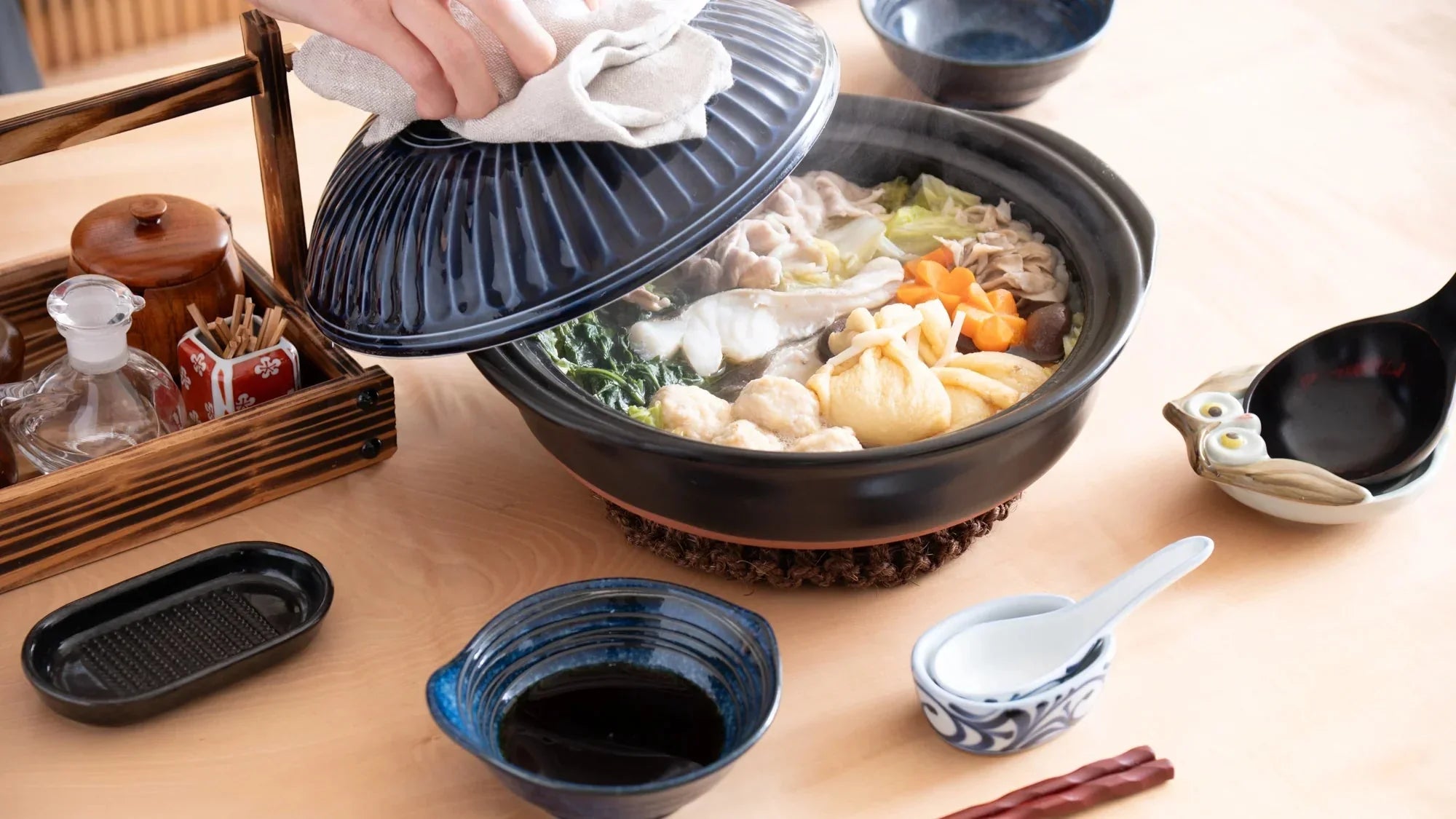
Cold Outside, Boiling Inside: How to Make Nabe
Written by Team MUSUBI
Around mid-October, the weather in Japan begins to settle into the chill of autumn. With autumn comes good vibes: the leaves change, the sweaters come out, the windows open to let cool air in. All this means it's time to plan a menu that warms you from the inside out — and one of the top choices in Japan is nabe.
Nabe means "hot pot" and is a common sight at mealtimes when the temperatures drop. It's traditionally made in a donabe, a clay pot that doubles as both cookware and serving dish. Place the pot directly on your heating element to cook to perfection, then transfer it to the table to eat. Or use a tabletop stove to cook directly at the table for a more interactive experience.
Nabe itself is completely customizable, with no two nabe dishes being the exact same. Simply start with your favorite soup base, then add protein, vegetables, konjac, noodles, and more. Whatever your heart (or stomach) desires, it can be put in your nabe.
If you're new to nabe, worry not. We at Musubi Kiln are great nabe connoisseurs, so to celebrate the season, we've compiled a list of some of our favorite ingredients (or nabe no gu), to give you some starting points. But, as long as it’s delicious, there's no wrong way to do nabe.

tables of contents
The Heart of Nabe: Soup

The Starring Role: Ingredients

We recommend putting any mushrooms or hardy vegetables in first. You can also swirl a few pieces of meat around, shabu-shabu style to impart even more umami. Other vegetables come next, and then tofu and mochi can go in last, as they'll soak up flavor while you eat the other ingredients.
Here is a non-exhaustive list of ingredients that the Musubi Kiln team recommends that you add, to give you an idea of just how flexible this meal is:

Maitake and shiitake mushrooms — perfect for adding more umami to the broth. These mushrooms are also an excellent substitute for meat if you don't partake.
Meatballs and fishcakes, including chicken dango (recommended to eat with a lot of garlic added in!) and nerimono. Add all the spheres you like, they'll enhance the soup with fishy, meaty flavors.
Thinly sliced meats are great to cook quickly and dip in sauce. Go for classics like pork belly (with a lot of green onions) and beef, or try lamb!
Seafood is a popular choice as well, with the team recommending shrimp and scallops. Fish recommendations included blowfish (fugu), splendid alfonsino, and monkfish.

The Finishing Touch: Condiments

You're now equipped with the knowledge to stay warm this winter over a hot pot of nabe. Musubi Kiln has a variety of donabes and cooking utensils, so all you need to do is make the grocery list and hit the shops. Itadakimasu!

Our Favorite Donabe
This pot holds portions for up to 3 people, making it excellent for a small dinner gathering. The design is available in other sizes, so you can choose the right one for your plans. It's pre-seasoned, meaning you can start cooking the same day it arrives at your home.







Leave a comment
This site is protected by hCaptcha and the hCaptcha Privacy Policy and Terms of Service apply.